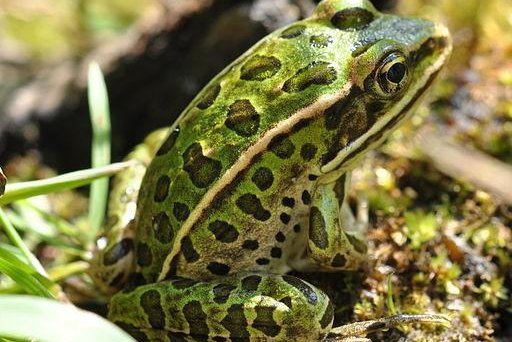A northern leopard frog. Photo by Douglas Wilhelm Harder/PSU
STATE COLLEGE, Pa., Feb. 23 (UPI) -- Biodiversity requires small predators, and plenty of them -- not small like a weasel, but small like a dragonfly. A diverse range of small insect and amphibian predators are essential for a healthy ecosystem, a group of researchers argue in a new study.
What's more, they may help protect humans from infectious diseases like chikungunya, lime disease, malaria and many others.
"In the last century, there has been an unprecedented global increase in infectious diseases and a concomitant decline in and homogenization of biodiversity," study author Jason Rohr, a biologist at the University of South Florida, explained in a recent press release. "The controversial 'dilution effect hypothesis' suggests that the two phenomena might be linked, or that biodiversity often decreases disease risk."
More than just place a stronger emphasis on the importance of small predators, the study is one of only a few to link shrinking biodiversity and upticks in infectious disease outbreaks.
Specifically, the study combined lab experiments, field surveys and mathematical modeling to better understand how the presence of dragonflies influenced infections of parasitic flatworms called trematodes in frogs.
Rohr and his colleagues found that dragonfly larvae were a good indicator of diminished rates of parasitic infections in the frogs -- and that a diversity of insect predators was even better.
"In our wetland survey, our microcosms and disease models, we discovered that there were fewer flatworms in frogs where there were more species of flatworm predators," said Rohr. "Additionally, the field study indicated that the diversity of these predators was a better predictor of flatworm infections than nutrients, frog immunity or the diversity and abundance of hosts."
The scientists say their results supports other research that suggests a dwindling of small predator diversity may precipitate growing populations of pests -- locusts, beetles, caterpillars and more.
The study was published this week in the journal PNAS.















